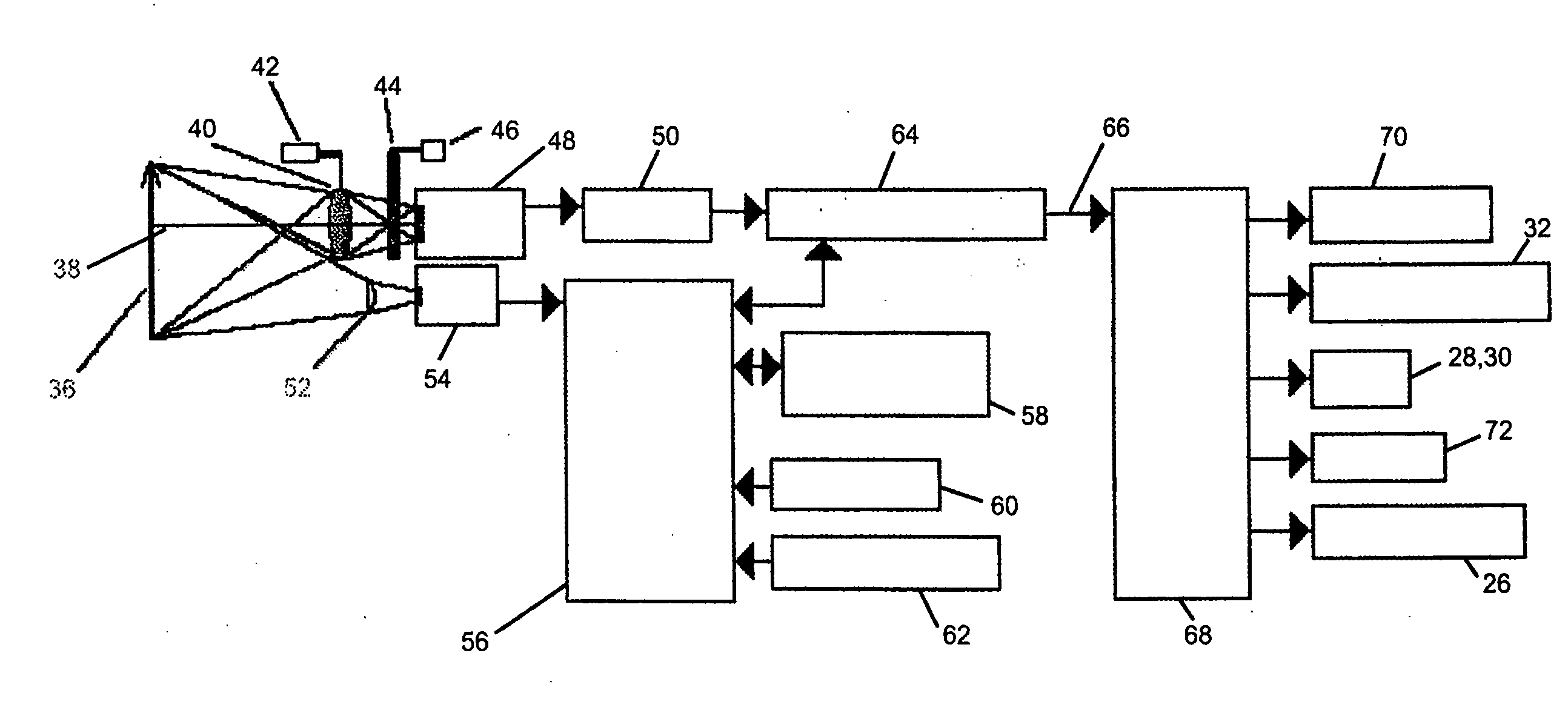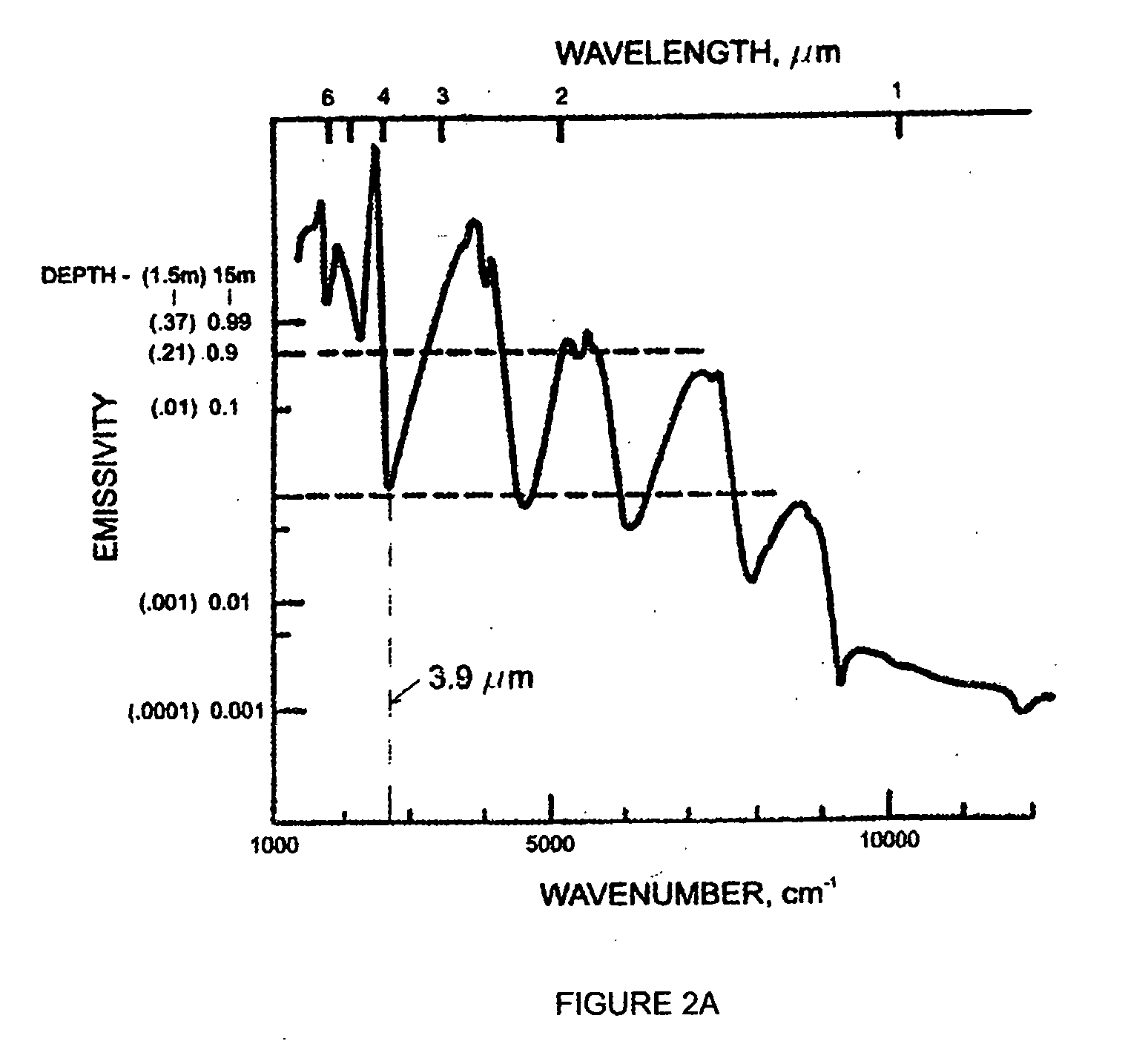Apparatus for thermal imaging
a technology for thermal imaging and apparatus, applied in the direction of optical radiation measurement, instruments, measurement devices, etc., can solve the problems of furnace shut down, increased the possibility of premature failure, and reduced life,
- Summary
- Abstract
- Description
- Claims
- Application Information
AI Technical Summary
Benefits of technology
Problems solved by technology
Method used
Image
Examples
Embodiment Construction
[0052] Referring now to the drawings wherein the same reference numbers are used in various figures to identify the same item, in FIGS. 3, 3A and 3B, a version of the Assignee's (Applicant's) Model 7200 V, thermal imager modified to implement the present invention is depicted. The improved device for thermal imaging of target surfaces includes a housing 12 having an opening 14 through which the infrared rays emanating from the target surface(s) are received. The improved device is an extremely light weight high-performance, IR camera which is designed for comfortable, one-handed point-and-shot operation. It uses an intuitive key pad located on the top of the imager which includes cursor controls 16, focus controls 18, menu selection key 20 and mode selection key 22. The menu selection key 20 allows the operator to identify the temperature range to be viewed.
[0053] Battery power is supplied upon activation of power switch 24 (FIG. 3B). Memory card slot means 26 is provided to enable...
PUM
 Login to View More
Login to View More Abstract
Description
Claims
Application Information
 Login to View More
Login to View More - R&D
- Intellectual Property
- Life Sciences
- Materials
- Tech Scout
- Unparalleled Data Quality
- Higher Quality Content
- 60% Fewer Hallucinations
Browse by: Latest US Patents, China's latest patents, Technical Efficacy Thesaurus, Application Domain, Technology Topic, Popular Technical Reports.
© 2025 PatSnap. All rights reserved.Legal|Privacy policy|Modern Slavery Act Transparency Statement|Sitemap|About US| Contact US: help@patsnap.com



